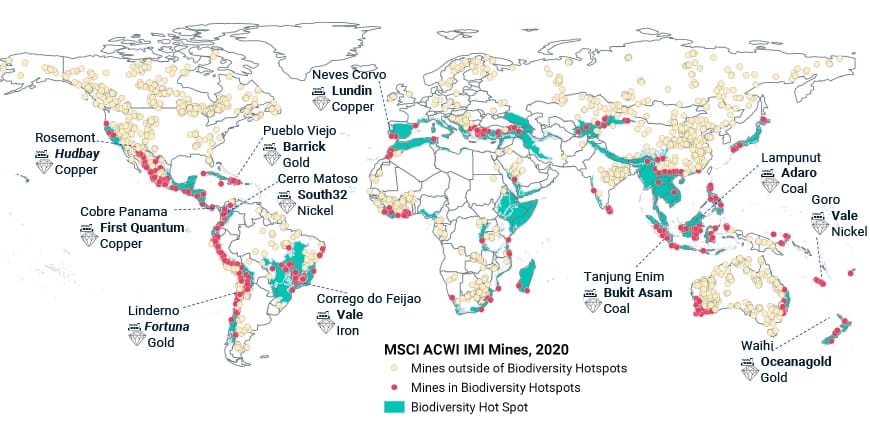Cost Of Mining: The Fall Of Biodiversity

Biodiversity on our planet is being affected by all kinds of human activities. From pollution and waste contamination and climate change to so many other factors, the biodiversity on Earth is steadily decreasing. Over one-third of all marine animals are currently under the threat of extinction due to over-fishing, climate change and pollution.
This article will specifically explore the effect of mining on biodiversity loss and what we can individually do to protect it. It serves as a reminder that this situation was caused by our actions and it is up to us to take responsibility and rectify this issue.
Background
As we grow as a civilization, biodiversity losses are a steadily rising risk. Will this problem perhaps surpass one of the biggest global issues; climate change?
Before we can understand the problem, we first need to understand biodiversity. Biodiversity is essentially the variety of all living things (humans, plants, animals..) and their interactions. It changes over time as both the ecosystems and the species go through evolution. Biodiversity is important for life as it supports all life on Earth — it is an interdependent relationship; All organisms depend on each other in one way or another for survival.
So if we don't have this biodiversity, there will be an entire collapse in the support system for both humans and other living organisms. We are reliant on nature for fresh air, food and numerous medicinal herbs. Different organisms help us in different manners. If there are losses in biodiversity, there will be gaps in the efficiency of the system.
The Problem
The problem is that mining has damaging effects such as erosion, soil contamination and sinkholes. But the major disadvantage of it is that it causes losses in biodiversity. Regardless of whether it is a large scale mine or small scale mine, it still has unwanted effects on the living beings and ecosystems.
Mining has had devastating impacts on biodiversity in the past few years. The graph below illustrates biodiversity hotspots and mines in these bio-diverse areas.

According to msci.com, over 20% of global mines owned by MSCI ACWI IMI (Morgan Stanley Capital International) are located in biodiversity hotspots.
Mining operations can have destructive impacts on biodiversity hotspots if they meet two specifications.
1) The bio-diverse spot has 1500+ unique plant and animal species.
2) However, they have already lost 70% of their primary vegetation.
Although, it is important to keep in mind that loss in biodiversity cannot be generalized globally because different regions experience different levels of losses in their systems.
Biodiversity Loss in Australia
For example, in Australia there are around 600,000 to 700,000 native species and a relatively high proportion of these species are exclusive to the continent — It is found nowhere else on Earth! Australia is home to half of the world's marsupial species. It is estimated that 70% of these species are yet to be discovered, documented, named and classified.
However, as civilization has developed over the past 2 centuries, Australia continues to have the highest rate of decline of mammal species among countries in the OECD (Organization for Economic Co-operation and Development)
More than 1900 Australian species are known to be threatened with the risk of extinction. On average, each different species faces 4 different threats. According to Resoilfoundation, ''mine wastes threaten biodiversity within protected areas all over the world, including 8 active tailings storage dams in Australian protected areas, recognized by the International Union for the Conservation of Nature''
The major reason for biodiversity loss in Australia is due to habitats being destroyed to clear land for urbanization and mining that causes pollution and produces toxic waste which disrupt wildlife.
What Can Be Done
Even though large scale actions need to be made, there are a few things we can do as individuals to protect the biodiversity on our planet. Therefore, it is still fortunately in our hands to do something about this crisis.
- Reduce what we waste. This decreases the demand for resources such as food or fabric, meaning a reduction in deforestation, mining and over-fishing — reduces loss in biodiversity.
- Educate others about this problem. This inspires more people to be a part of protecting the biodiversity on our planet.
- Buy fewer goods. This reduces the demand for resources and as mentioned above, reduces harmful human activities and protects biodiversity.
- Donate to biodiversity funds. Financial support can help organizations maintain protected areas such as national parks and wildlife reserves.
- Support projects that promote biodiversity protection. This aids organizations in their efforts to restore biodiversity and protect wildlife.




